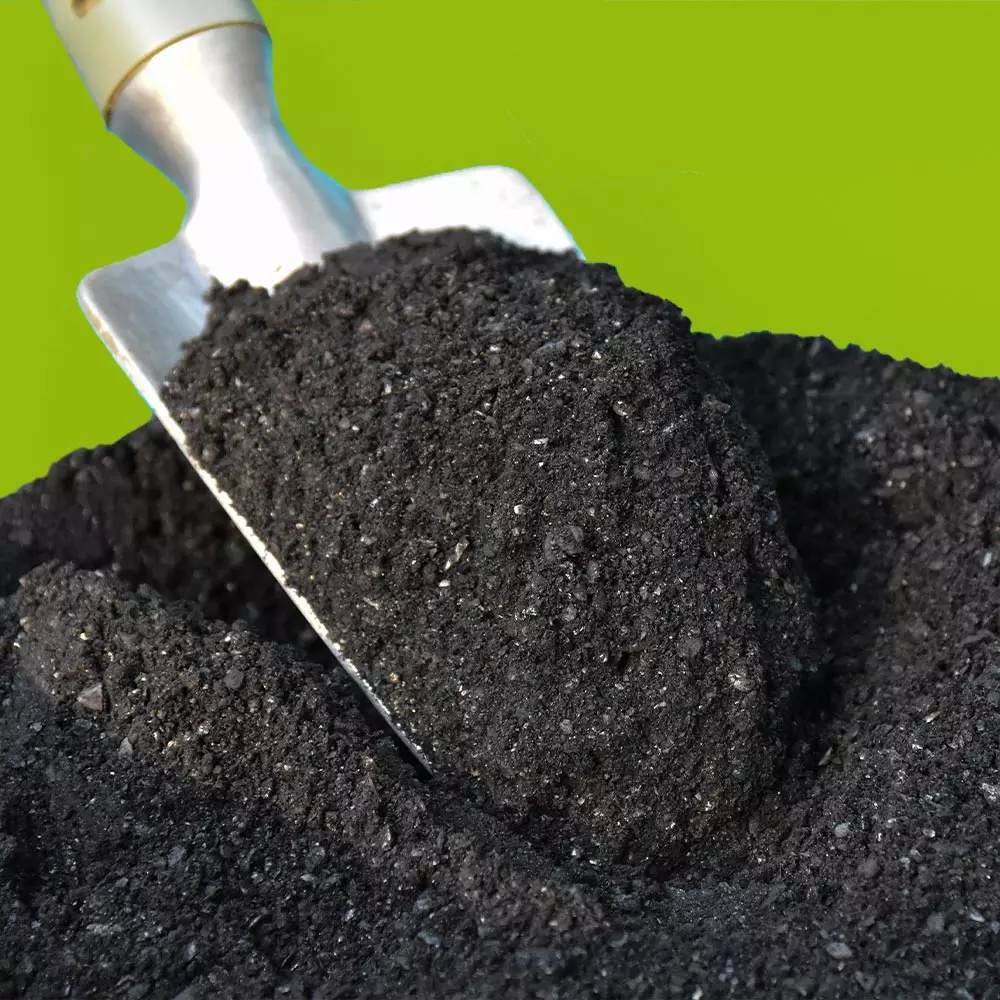

Hero banner custom title
Biochar - a fertilizer with carbon sequestration properties
3 min
Biochar is an odd bilingual portmanteau, combining the term biomass with the French word for charcoal (“charbon”). Resembling a kind of carbonized powder, this seemingly anodyne substance may well be a gamechanger in the fight against climate change.
Few people have heard about biochar but this has every chance of changing within a few short years – if only because the new substance, made from biomass such as wood waste and chaff residues - is a serious contender for leading the global battle against global warming. As explained by Olivier Reinaud, co-founder of NetZero, a French startup already running two biochar production sites in Cameroon and Brazil,
“Plants capture carbon in the atmosphere via photosynthesis. If nothing is done to interrupt a plant’s natural cycle, it decomposes when it dies and returns any carbon to the atmosphere. Producing biochar interrupts this cycle by extracting the carbon in question”.
The pyrolytic process that NetZero uses consists of heating biomass at a very high temperature in an environment that is anaerobic, hence where no combustion takes place. This makes it possible to break complex molecules down into simpler ones and by so doing to produce, in Reinaud’s words, “Gasses like methane and hydrogen that are potential renewable energy sources; a liquid by-product; and biochar, a plant-based charcoal akin to carbonized powder”.
Biochar is becoming front page news in large part because of numerous scientific studies’ confirmation of its ability, when spread across topsoil, to improve agricultural yields. It does this, in Reinaud’s words, by “acting as a kind of natural sponge that retains water in the ground” – a useful property not only for drought resilience reasons but also because biochar is capable of attaching nutrients directly to plants, thereby reducing the amount of fertilizer they require. Lastly, biochar is also good for staving off soil acidification.
Moreover, these direct benefits are not the only reason why the new substance is getting so much attention. As Reinaud explains, “Biochar is very slow to degrade and therefore sequesters carbon that used to be released. This reduces atmospheric carbon concentrations and helps to reverse global warming”.
A 2019 IPCC report even mentioned biochar as one way - alongside massive reforestation, expanded biofuel use and reduced fossil fuel consumption - of keeping the global temperature rise below 1.5 degrees. Since 2020, economic stakeholders have been able to use biochar when getting their sequestration-related carbon credits certified.
This has had a positive effect on the earnings of companies in the sector, which is booming and was recently estimated by market research firm Data Bridge Market Research as hitting $192 million in the year 2021, with a whopping $498 million predicted by 2029!
Note as well the European Union’s July 2022 decision to add biochar to its list of authorised fertilisers – all of which explains why so many new players have started up in the business, ranging from French interests such as Reinaude’s NetZero or else Carbonloop; Pacific Biochar from the USA; Rainbow Bee Eater from Australia; or Ecoera in Sweden.
It remains that a number of watchdog groups have already issued warnings about the potential for things to go wrong. One example is Biofuelwatch, which has been drawing attention to problems associated with the sourcing of biomass, as well as the need to monitor the risk that the sector’s rapid success might translate into land grabs.
The solution is to ensure that biochar develops along sustainable lines. As noted by the International Biochar Initiative, a lobby which promotes the sector’s interests, “Biochar production systems must be safe, clean, economical and efficient, while satisfying or even surpassing all environmental standards and regulatory requirements in the regions where they operate”. In other words, the main challenge that remains for this highly promising technology is making sure that the appropriate waste biomass is being sourced. Otherwise, it’s all systems go!











